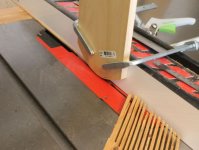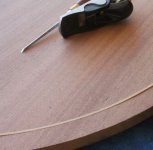Birdhunter
Member
- Joined
- Jun 16, 2012
- Messages
- 4,144
I know this tool has been discussed before and there are many ways to accomplish the same function, but I find the guide to be extremely useful in reproducing thin trim pieces for the boxes I like to make.
I’m making a box for a friend’s cremains and need to cut trim pieces from scrap ebony of various sizes.
The guide made the task effortless.
I’m making a box for a friend’s cremains and need to cut trim pieces from scrap ebony of various sizes.
The guide made the task effortless.



